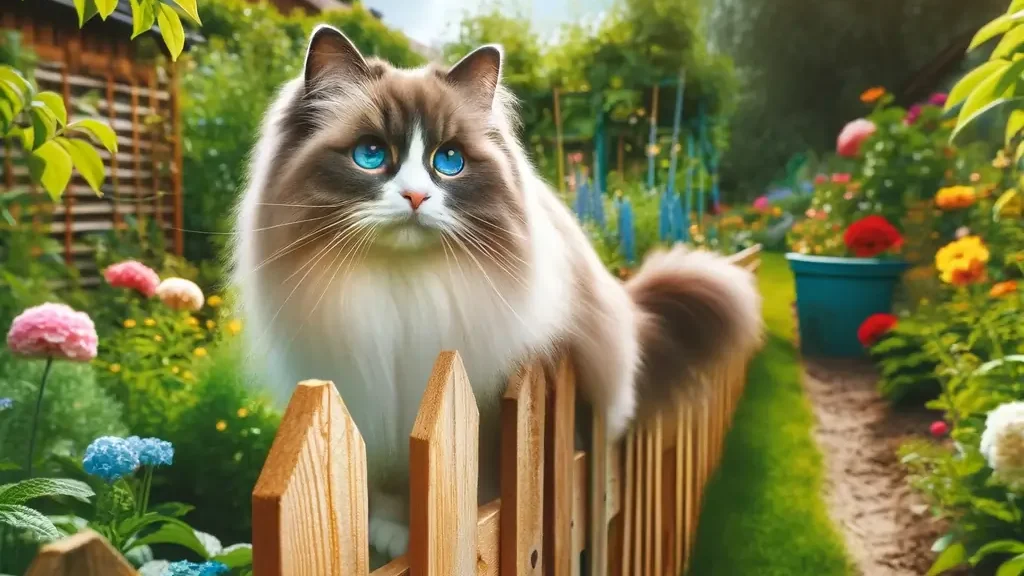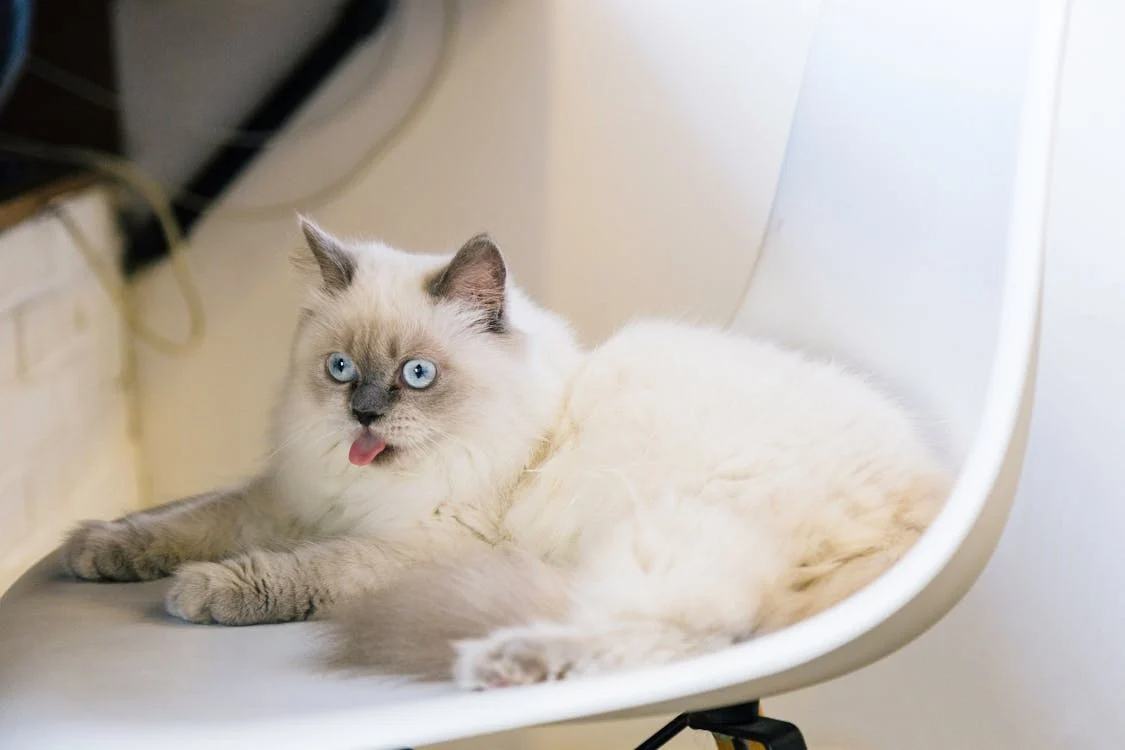Ragdoll cats are renowned for their gentle, affectionate nature, often described as feline companions with a puppy-like demeanor. However, one question frequently arises among potential owners: Do Ragdoll cats bite? This comprehensive guide delves into the intriguing world of Ragdoll cat behavior, shedding light on their propensity for nibbling and providing valuable insights to ensure a harmonious relationship with your furry friend.
Understanding the Ragdoll’s Playful Personality
Ragdolls are known for their playful and inquisitive nature. Unlike their more aloof feline counterparts, these cats thrive on human interaction and often seek out attention and affection. Their gentle demeanor and tendency to go limp when picked up (hence the name “Ragdoll”) have endeared them to countless pet owners worldwide.
However, it’s essential to recognize that even the most docile cats can exhibit biting behavior, particularly during playtime or when feeling overstimulated. Ragdolls are no exception to this rule, and their playful antics may occasionally involve gentle nibbling or mouthing.
The Art of Ragdoll Communication
Cats, including Ragdolls, communicate through a variety of vocalizations, body language, and physical cues. Biting can be a form of communication, conveying a range of emotions or needs. For instance, a Ragdoll may gently nibble or mouth their owner’s hand to initiate playtime or seek attention.
Moreover, it’s crucial to understand that biting can also be a sign of overstimulation or discomfort. If a Ragdoll feels overwhelmed by excessive petting or handling, they may resort to gentle biting as a way to communicate their desire for space or a break.
Socialization: The Key to Preventing Biting
Proper socialization from an early age plays a crucial role in shaping a Ragdoll cat’s behavior, including their propensity for biting. Kittens that are exposed to positive human interactions and gentle handling during their formative months are less likely to develop biting habits as adults.
Reputable breeders and responsible pet owners should prioritize socialization, ensuring that Ragdoll kittens are accustomed to being handled, played with, and exposed to various stimuli in a positive and controlled environment. This early exposure helps them develop confidence and trust, reducing the likelihood of defensive or aggressive behaviors like biting.
Redirecting Biting Behavior
Even with proper socialization, some Ragdolls may still exhibit occasional biting behavior, especially during playtime. In such cases, it’s essential to redirect their energy in a positive manner. Providing interactive toys, scratching posts, and engaging in supervised playtime can help channel their natural hunting instincts and reduce the likelihood of biting.
Additionally, it’s crucial to avoid punishing or scolding a Ragdoll for biting, as this can reinforce the behavior or create fear and mistrust. Instead, gently disengage from the situation and redirect their attention to an appropriate activity or toy.
Addressing Underlying Health Issues in Ragdoll
In rare cases, persistent or excessive biting behavior in Ragdoll cats may be indicative of an underlying health issue. Conditions such as dental problems, pain, or neurological disorders can cause discomfort or irritability, leading to biting as a coping mechanism.
If you notice a sudden or significant change in your Ragdoll’s biting behavior, it’s essential to consult with a veterinarian to rule out any potential medical concerns. Addressing any underlying health issues can help alleviate discomfort and potentially resolve the biting behavior.
Creating a Ragdoll-Friendly Environment
Providing a stimulating and enriching environment for your Ragdoll cat can also help prevent biting behavior. Ensure they have access to scratching posts, cat trees, and plenty of interactive toys to keep them mentally and physically engaged. Additionally, regular playtime and exercise sessions can help burn off excess energy and reduce the likelihood of biting due to boredom or pent-up energy.
Patience and Positive Reinforcement
Like any pet, training and behavior modification for Ragdoll cats require patience, consistency, and positive reinforcement. Rewarding desired behaviors with treats, praise, or playtime can reinforce good habits and strengthen the bond between you and your feline companion.
It’s essential to remember that every Ragdoll is an individual, and their behavior may vary based on their personality, upbringing, and environment. With patience, understanding, and a commitment to positive reinforcement, you can effectively manage and minimize any biting behavior, fostering a harmonious and loving relationship with your Ragdoll cat.

Conclusion
While Ragdoll cats may occasionally exhibit gentle nibbling or mouthing behavior, they are generally known for their affectionate and docile nature. By understanding their communication cues, providing proper socialization and enrichment, and addressing any underlying health concerns, you can enjoy a fulfilling and rewarding relationship with your Ragdoll companion.
Embrace the Ragdoll’s gentle spirit, and you’ll discover a loyal, loving, and endlessly entertaining feline friend who will bring joy and laughter into your life for years to come.
FAQs
Can Ragdoll cats be aggressive?
While Ragdolls are known for their gentle and affectionate nature, they can exhibit aggressive behavior in certain situations, such as when feeling threatened, territorial, or during play. However, with proper socialization, training, and environmental enrichment, aggression can be minimized.
Why is my Ragdoll cat biting me?
There are several potential reasons why a Ragdoll cat may bite, including play, attention-seeking behavior, overstimulation, or underlying health issues. It’s essential to observe your cat’s body language and behavior patterns to identify the root cause and address it appropriately.
Do Ragdoll cats like to be petted?
Yes, Ragdoll cats are known for their love of affection and enjoy being petted by their owners. However, it’s crucial to respect their boundaries and watch for signs of overstimulation, such as a twitching tail or flattened ears, to prevent petting-induced aggression or biting.

Hey guys, My name is Simon Smith. I’m from Canada and live near Victoria
I live with my sweet family and have 20+ Ragdolls of different types. I love them as my own children. My profession is as a hotel manager.
I love to keep Ragdolls and grow their breeder case. I have 7 years of experience.
I’m an expert in cat care. So, I’m here to provide you with new information about my cats daily. This is my personal blog website, so I request that you kindly visit our site daily.
If you’re a Ragdolls lover and you have any questions or confusion about cats, text me on the Contact Us page or Gmail.
Thank u
